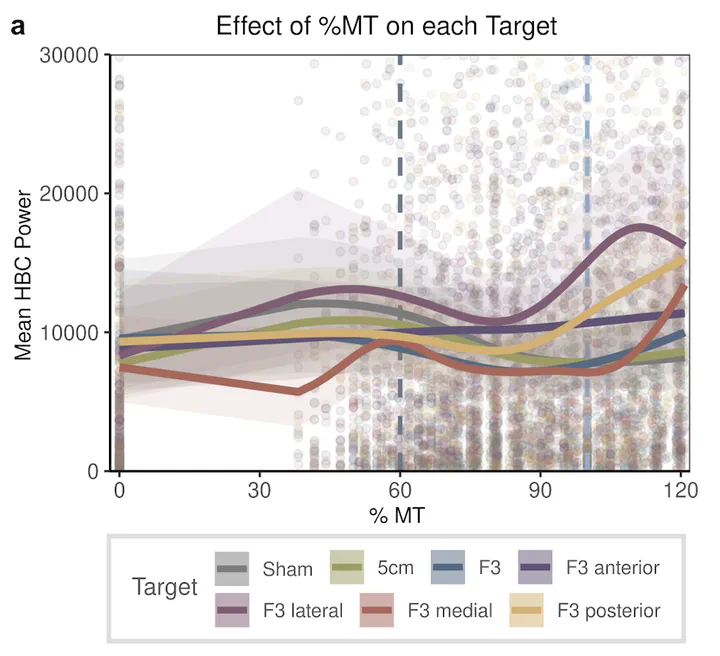Target-Specificity and Repeatability in Neuro-Cardiac-Guided TMS for Heart-Brain Coupling
Feb 28, 2025· ,,,,,,,
,,,,,,,
Zijian Feng
Sandra Martin
Ole Numssen
Konstantin Weise
Ying Jing
Gerasimos Gerardos
Carla Martin
Gesa Hartwigsen
Thomas Knösche

Abstract
The dorsolateral prefrontal cortex (DLPFC) is a principal target for repetitive transcranial magnetic stimulation (rTMS) in the treatment of major depressive disorder, with therapeutic effects hypothesized to be mediated by the connectivity between the DLPFC and the subgenual anterior cingulate cortex (sgACC). Interestingly, these depression-related hubs are also part of the heart-brain axis, thus potentially rendering the stratification of individual depression targets possible by tapping into short-term heart rate modulation after DLPFC stimulation. Recently, a set of stimulation protocols has been proposed to objectively quantify these downstream effects. While these neuro-cardiac-guided TMS protocols (NCG-TMS) are promising to improve clinical responses, rigorous, third-party assessments of these approaches including replicability, robustness, and the impact of stimulation side-effects are critically missing. Here, we employed a 10 Hz TMS protocol (NCG-TMS 2.0) across three sessions to evaluate the effects of stimulation intensity and DLPFC target specificity on heart–brain coupling (HBC) in a cohort of healthy participants. Our results demonstrate a significant nonlinear increase in HBC with higher stimulation intensity, with the F3 lateral and F3 posterior targets eliciting more robust effects than the sham condition. For the first time, we are able to demonstrate reliable target- and intensity-specific HBC modulation across multiple NCG-TMS 2.0 sessions. Although the repeatability within subjects was limited when including the initial session, subsequent sessions yielded consistent results for the F3 anterior and F3 lateral targets at higher intensities. Although pain and other side effects influenced HBC, they did not fully account for the observed modulation of HBC. These findings underscore the critical role of spatial specificity and stimulation intensity in modulating heart–brain interactions and offer a potential framework for optimizing individualized rTMS treatment protocols for depression.
Type